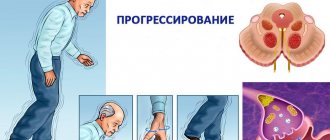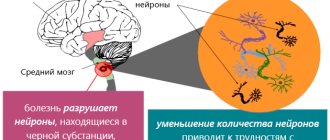The danger of borreliosis during pregnancy
The effect of spirochetes on the course of pregnancy and fetal development has not been sufficiently studied, but due to their similarity with Treponema pallidum (the causative agent of syphilis), their teratogenic effect is assumed.
WARNING! The information on the site is provided for informational purposes and cannot be used to make a diagnosis or make treatment decisions.
There is still no reliable data on how borreliosis affects the fetus during pregnancy.
The negative impact on the baby and the course of the gestational period has not been proven.
There is no consensus on whether borreliosis is transmitted through breast milk.
Domestic and German infectious disease specialists believe that Borrelia does not pass into breast milk, and you can breastfeed your baby after treatment with antibacterial drugs. In addition, breast milk contains enough antibodies to protect the baby from the virus.
English borreliosis researchers are confident that there is a risk of infection during breastfeeding, since borrelia penetrate into mother's milk. However, this theory has not been proven.
How is tick-borne borreliosis transmitted?
The causative agent is a bacterium that looks like a tiny spiral. The spirochete of the genus Borrelia is transmitted by ticks when bitten or crushed and accidentally introduces an infectious agent into the mouth or eye. The infestation of ticks in one area ranges from 10% to 70%, that is, it is impossible to say for sure that in the N region all ticks are “sick”.
The tick bites an hour after attachment, the bite is not felt because the saliva contains painkillers, dilates blood vessels and prevents blood clotting. Prompt removal of the bloodsucker can prevent infection, since the first bite transmits bacteria from the salivary glands, if present. Bacteria from the tick's intestines are transmitted from the second day. If the tick is not noticed, it can feed for a whole week.
Symptoms
Lyme disease has a long incubation period—up to three weeks.
After a tick is detected, swelling, redness and hardening of the soft tissues are observed at the site of the bite, itching is felt, and a local increase in temperature is possible.
These symptoms pass, after some time the victim periodically begins to suffer from a sore throat, sore throat, aching bones, and chills. In the evenings the temperature rises to subfebrile levels.
The symptoms go away as inexplicably as they begin.
After the incubation period, migrating ring-shaped spots appear on the body - purplish-blue circles with a white core.
Pain and aches in the muscles and bones intensify, the muscles of the back of the head are tense, the lymph nodes enlarge and become denser.
Depending on which systems are affected by the spirochetes, symptoms of damage to the central nervous system, eyes, and gastrointestinal tract appear.
Symptoms of intoxication increase - the headache intensifies, nausea and vomiting, and severe dizziness appear.
As the disease progresses, the patient's speech is impaired, the clarity of movements is impaired, her gait becomes uncertain, her memory becomes weaker, and mental disorders are possible.
Photophobia appears, sensitivity to volume and smells, as well as taste buds change. Meningitis develops.
Cardiac activity is disrupted - the heart hurts, the heart rhythm changes.
The disease progresses in waves, with periods of exacerbations followed by remissions.
Borreliosis becomes chronic. Its symptoms depend on which organ or system of the body is most affected.
Consequences of borreliosis
Advertising:
Early contact with a doctor and diagnosis of the disease increases the chances of successful therapy: in the first stages, tick-borne borreliosis is completely cured, leaving no negative consequences. At stage 2, treatment success varies from 85 to 90%. If the course of treatment is not completed completely, the immune system is unable to overcome the infection, the disease is asymptomatic and becomes chronic, and serious functional disorders occur in the body.
Complications and irreversible consequences occur with stage 3 borreliosis.
The nature of the consequences depends on which organs are affected by the infection. Irreversible processes can occur in the brain, heart or joints.
When the infection reaches the nervous system, brain pathologies occur. Due to inflammation of the facial nerve, the patient’s face changes and the cheek stops moving. Inflammation of the meninges can become chronic and lead to irreversible destruction of cranial nerve endings. It is also possible to develop cerebral ischemia, which often provokes a decrease in hearing and vision.
The most dangerous cardiac consequence of borreliosis is heart failure, which develops in only 5% of cases. When joints are damaged, arthritis develops, which, if not treated in a timely manner, leads to joint deformation.
Diagnostics
If symptoms of borreliosis are pronounced, the presence of antibodies in the blood is checked. The serological method is used because cultures are not sensitive enough.
In patients with immunodeficiency and with severe symptoms and a negative test, diagnosis is carried out using the PCR method.
The blood is checked for the presence of IgG and IgM antibodies. IgM is formed in the blood during the first week of infection; after a month or two, its concentration decreases. IgG can appear within six months from the moment of infection.
To control the situation, the blood is checked for both groups of antibodies, every two to four weeks.
Treatment of tick-borne borreliosis
To treat tick-borne borreliosis, regardless of the symptoms, tetracycline antibiotics or penicillins are used. Mild forms of infection are treated on an outpatient basis with tablets. When organs and tissues are involved, related specialists must be involved: a neurologist, cardiologist, dermatologist and rheumatologist.
After acute illness it is necessary to be observed for two years.
When bitten by an infected tick, tick-borne borreliosis is prevented with antibiotics and the level of antibodies to borrelia is monitored after 3 months; if a high level is detected, then it is considered that the person has suffered an acute infection, so the adult is then observed for 2 years.
At the Center for Infectious Diseases of the international clinic Medica24, they diagnose and treat the disease at a high level, provide consultations with specialized specialists at any time and provide regular follow-up. Seek help from an infectious disease specialist by phone
Course of therapy
A pregnant woman is prescribed antibacterial therapy in a gentle dosage. It is important to start treatment as early as possible, before the virus has thoroughly penetrated the circulatory system and internal organs.
The earlier treatment is started, the easier and faster the recovery. If therapy is started in the first month after infection, the disease is cured, in most cases, completely without becoming chronic.
To treat borreliosis, antibiotics from the group of tetracyclines, penicillins and cephalosporins are prescribed.
In the absence of neurological symptoms, the presence of erythema migrans and enlarged lymph nodes, medications in tablets or capsules are prescribed:
- Doxycycline - 100 mg 2 times a day;
- Amoxicillin - 1000 mg 3 times a day;
- Minocycline - 100 mg 2 times a day;
- Cefuroxime - 500 mg 2 times a day.
The course of treatment is 2-3 weeks (14-21 days).
In the acute course of the disease with signs of damage to the nervous and cardiovascular systems and joints, the following is prescribed:
- Doxycycline - 200 mg 2 times a day;
- Minocycline - 200 mg 2 times a day;
- Cefotaxime - 2000 mg 3 times a day intravenously;
- Ceftriaxone - 2000 mg 1 time / day IV or IM.
Duration of therapy is 21-28 days.
In the chronic form of Lyme disease with signs of damage to the joints, heart, nervous system and skin, the following are indicated:
- Ceftriaxone 2000 mg intravenously once a day for 21 days;
- Penicillin 4 million units intravenously 6 times a day for 14 or 21 days.
Local therapy is carried out at the site of the bite. For this, a special mash (mixstura agitanda) is prepared.
Compound:
- metronidazole - 5.0 g;
- sulfanilamide sulfacetamide 30% aqueous solution - 40 ml;
- dexpanthenol 75% 10 ml;
- prednisolone - 0.50 g;
- distilled water - 50 ml.
Before use, shake the liquid and make lotions in the form of applications for 10-15 minutes three times a day for a course of 5-7 days.
Treatment of borreliosis during pregnancy does not have a single scheme. The doctor takes into account the timing of pregnancy, the severity and form of the disease, the concentration of Borrelia in the body, and prescribes individual therapy.
Drugs are prescribed based on an objective assessment of the severity of the condition.
Most cases of borreliosis during pregnancy result in the birth of a healthy baby.
What manifestations occur later?
Borrelia spreads through the blood throughout the body, especially damaging the nervous system, joints, skin and heart, causing intoxication. In some cases, symptoms gradually progress, in some cases they alternate with periods of improvement in well-being, sometimes manifestations develop a long time after the bite, but on average, a month to a month and a half passes from infection to organ damage.
- Damage to the nervous system is manifested by facial neuritis and radiculitis, up to paresis, but paralysis is not typical. First, night pain occurs, then sensory disturbance occurs, and then movement restriction occurs. Meningitis may develop; some patients experience only severe weakness - asthenic syndrome.
- Joint damage appears within 3 months, but possibly later. In Russians, arthritis occurs early, in other countries - with a delay of a year. First there is moderate pain, and then inflammation of a large joint with a slight effusion. The knee is often affected, and the joint closest to the site of the bite is damaged. After a few weeks, usually no later than 3 months, the arthritis regresses; without treatment, it may return after a while.
- At the onset of borreliosis, the ECG may change, which is associated with symptoms of intoxication. Damage to the heart develops after a month and a half of illness; rhythm disturbances occur within a month to a month and a half. In the later stages, inflammation is possible - myocarditis and pericarditis.
- Skin damage is manifested by rashes, characterized by the formation of red-blue painful nodules on the ear, face and breast, with an enlarged lymph node near the skin lesion. Such lesions exist for several months and disappear without a trace.
If the above symptoms occur, you must immediately contact a specialist who is open seven days a week at the Medica24 international clinic; appointments are available 24 hours a day. Early initiation of therapy avoids relapse of the disease.
Causes
Lyme disease occurs as a consequence of a tick bite. Tick vectors feed on the blood of ground birds and mammals, which are carriers of Borrelia bacteria and have natural immunity. The incubation period lasts no more than a month.
While feeding, the tick leaves behind a small amount of blood from the host animal. Pathogens are transmitted to humans during a tick bite. Thus, pathogenic bacteria enter the human body.
Treatment
A typical answer to the question “how to treat Lyme disease?” - A 20-day course of antibiotics taken orally (doxycycline, amoxicillin or cefuroxime). Antibiotics, the description of which can be found in the instructions, destroy pathogens and prevent the development of symptoms detrimental to health. Patients who start taking medications during the incubation period, immediately after exposure to the vector and diagnosis, quickly make a full recovery.
Before treating Lyme disease with the above medications, it is necessary to undergo diagnostics and conduct an allergy test. Some patients (particularly children and pregnant women) are contraindicated with doxycycline, so treatment with penicillin is prescribed.










